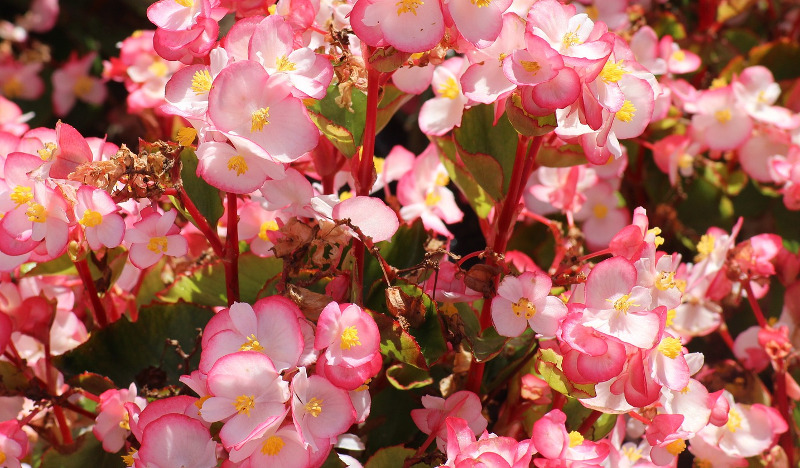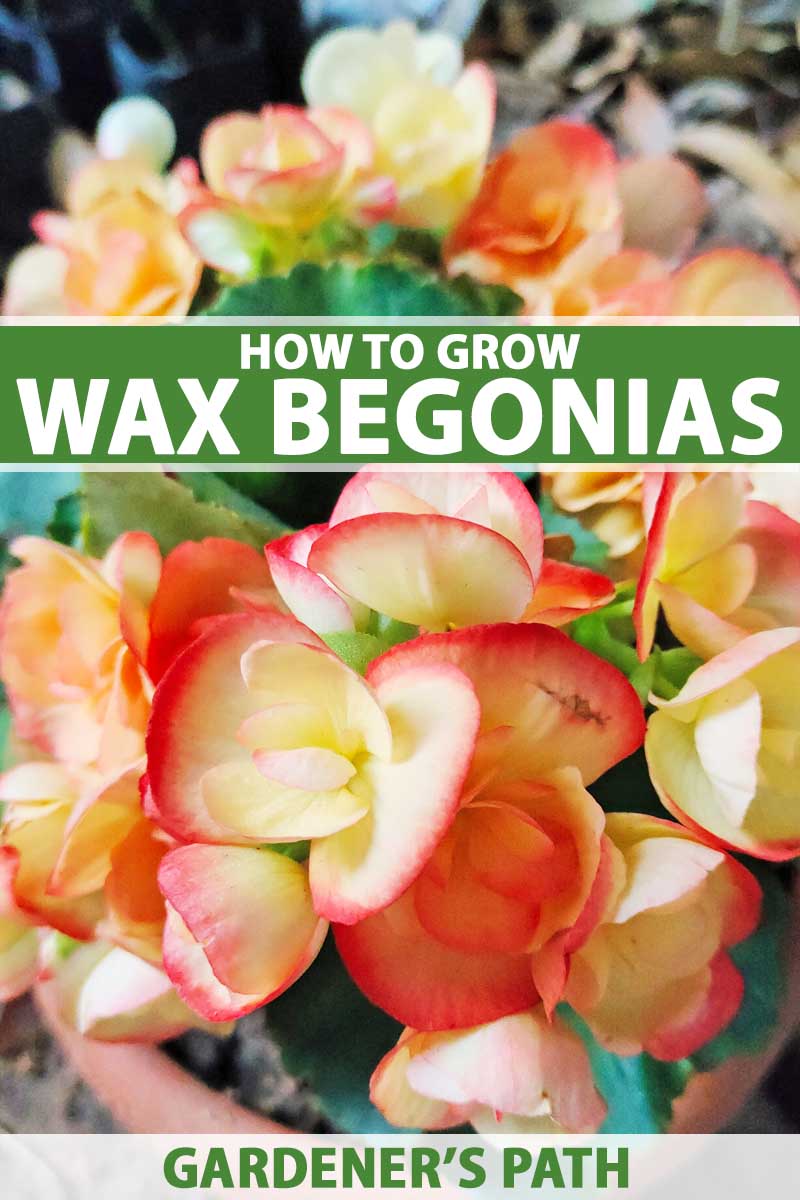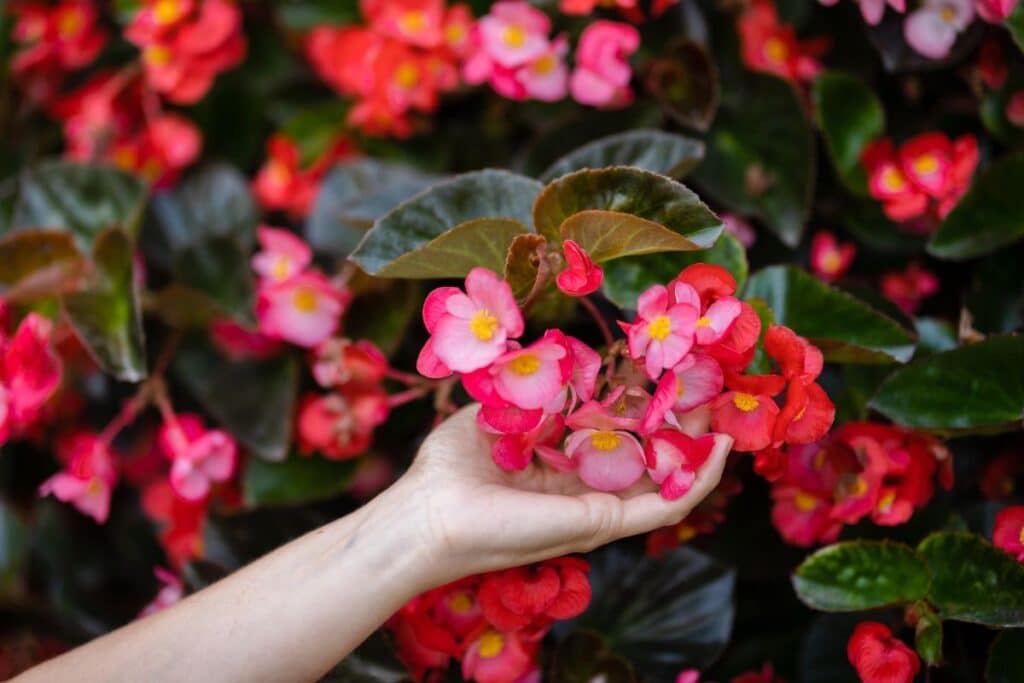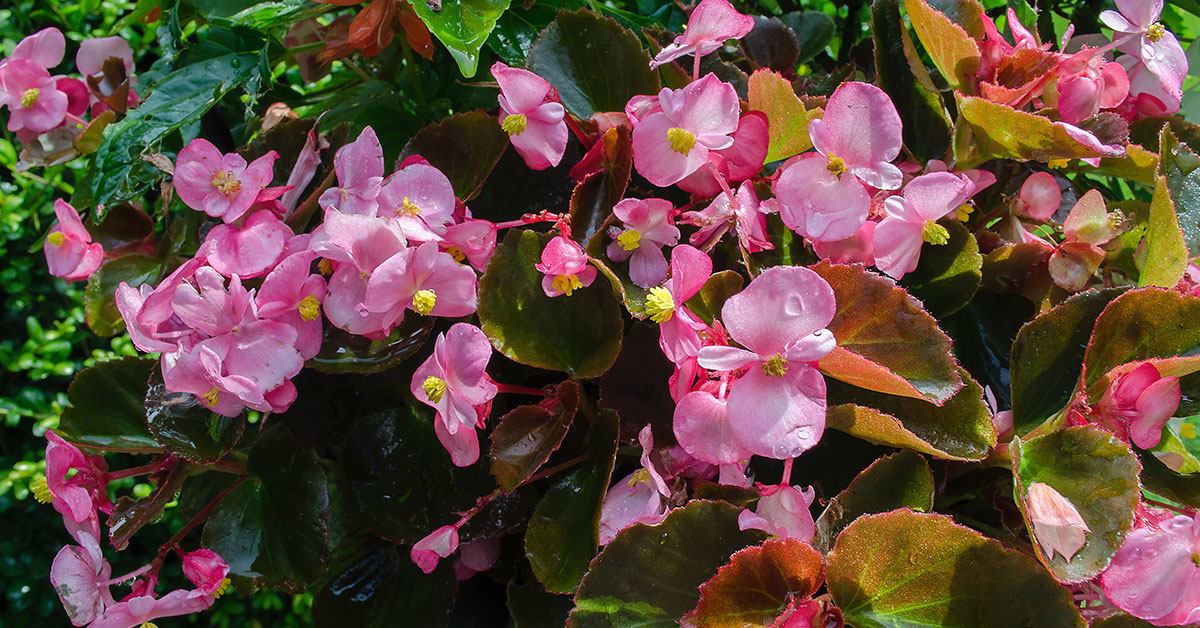Why Deadheading is Crucial for Wax Begonias
Deadheading wax begonias is a simple yet effective technique that can greatly enhance the appearance and health of these beautiful plants. By removing spent blooms, you can encourage your wax begonias to produce more flowers, promote healthy growth, and maintain their attractive foliage. But why is deadheading so important for wax begonias, and how can you incorporate this practice into your regular plant care routine?
One of the primary reasons deadheading is crucial for wax begonias is that it allows the plant to focus its energy on producing new growth and blooms, rather than expending energy on seed production. When a wax begonia produces a flower, its primary goal is to create seeds for reproduction. However, if you remove the spent bloom, the plant will redirect its energy towards producing new flowers, stems, and leaves. This process can lead to a more robust and vibrant plant, with a greater abundance of blooms.
In addition to promoting healthy growth and blooming, deadheading wax begonias can also help maintain their appearance. Spent blooms can be unsightly and detract from the overall beauty of the plant. By removing these blooms, you can keep your wax begonias looking their best, with a neat and tidy appearance that showcases their attractive foliage and vibrant flowers.
When learning how to deadhead wax begonias, it’s essential to understand the importance of this technique in promoting the overall health and well-being of the plant. By incorporating deadheading into your regular plant care routine, you can enjoy a more vibrant and robust wax begonia, with a greater abundance of blooms and a more attractive appearance.
When to Deadhead Wax Begonias for Optimal Results
Deadheading wax begonias is a crucial step in maintaining their health and promoting blooming, but timing is everything. To get the most out of deadheading, it’s essential to understand when to deadhead wax begonias for optimal results. The ideal time to deadhead wax begonias depends on the plant’s growth cycle, blooming season, and personal preference.
As a general rule, deadhead wax begonias during the blooming season, which typically occurs in the spring and summer months. During this time, the plant produces an abundance of flowers, and deadheading will encourage more blooms to form. Remove spent blooms as soon as they begin to fade, usually within a few days of opening. This will prompt the plant to produce new flowers, rather than expending energy on seed production.
However, deadheading wax begonias is not limited to the blooming season. In fact, deadheading can be done throughout the growing season, from spring to fall. Regular deadheading will help maintain the plant’s appearance, promote healthy growth, and encourage new blooms to form.
When deadheading wax begonias, consider the frequency of deadheading. For optimal results, deadhead wax begonias every 7-10 days during the blooming season. This will ensure that the plant is consistently producing new flowers and maintaining its appearance. Outside of the blooming season, deadheading can be done less frequently, every 4-6 weeks.
It’s also essential to consider the timing of deadheading in relation to the plant’s growth cycle. Deadheading wax begonias during the active growth phase, when the plant is producing new leaves and stems, will promote healthy growth and encourage more blooms to form. Avoid deadheading during periods of dormancy or stress, as this can cause the plant undue stress.
By understanding when to deadhead wax begonias, you can optimize the process and enjoy a more vibrant and blooming plant. Remember to deadhead regularly, consider the plant’s growth cycle, and adjust your deadheading schedule accordingly. With these tips, you’ll be well on your way to mastering the art of deadheading wax begonias and enjoying a thriving, blooming plant.
Tools and Techniques for Deadheading Wax Begonias
Deadheading wax begonias requires the right tools and techniques to ensure a safe and effective process. The goal is to remove spent blooms without damaging the plant or its delicate stems and leaves. To achieve this, you’ll need a few essential tools and to master some simple techniques.
One of the most important tools for deadheading wax begonias is a pair of sharp, clean pruning shears. These will allow you to make precise cuts and avoid crushing or tearing the plant’s stems. When selecting pruning shears, look for a pair with a curved or angled blade, as these are designed specifically for cutting and trimming plants.
In addition to pruning shears, you may also use pinching as a technique for deadheading wax begonias. Pinching involves using your thumb and index finger to gently remove spent blooms from the plant. This method is particularly useful for removing small, delicate blooms that may be difficult to cut with pruning shears.
Another technique for deadheading wax begonias is cutting back spent blooms. This involves using pruning shears to cut the stem of the spent bloom, just above a node (the point where a leaf meets the stem). This will help to encourage new growth and promote more blooms to form.
When deadheading wax begonias, it’s essential to make clean cuts and avoid tearing or crushing the plant’s stems. This can be achieved by cutting at a 45-degree angle, just above a node, and using a gentle, smooth motion. By following these techniques and using the right tools, you can ensure a safe and effective deadheading process for your wax begonias.
It’s also important to note that deadheading wax begonias is a process that requires patience and attention to detail. Take your time when removing spent blooms, and make sure to inspect the plant carefully to avoid missing any blooms. By following these tips and techniques, you’ll be well on your way to mastering the art of deadheading wax begonias and enjoying a thriving, blooming plant.
How to Identify and Remove Spent Blooms
Identifying and removing spent blooms is a crucial step in the deadheading process for wax begonias. Spent blooms are flowers that have faded or wilted, and removing them will help to promote new growth and encourage more blooms to form. To identify spent blooms, look for flowers that have lost their color, wilted, or dropped their petals.
When removing spent blooms, it’s essential to handle the delicate petals and stems with care. Gently grasp the stem of the spent bloom, just above the node (the point where the leaf meets the stem), and twist it off. This will help to avoid damaging the plant’s stems or leaves. If the spent bloom is particularly stubborn, you can use a pair of pruning shears to cut the stem, just above the node.
When removing spent blooms, make sure to inspect the plant carefully to avoid missing any blooms. Check the plant from multiple angles, and gently turn the leaves and stems to ensure that you don’t miss any spent blooms. By removing all spent blooms, you’ll be able to promote new growth and encourage more blooms to form.
It’s also important to note that wax begonias can produce a large number of blooms, and removing spent blooms can be a time-consuming process. However, by following these tips and techniques, you’ll be able to efficiently and effectively remove spent blooms and promote new growth.
In addition to removing spent blooms, you can also use this opportunity to inspect the plant for any signs of pests or diseases. Check the leaves and stems for any signs of damage, and make sure to remove any dead or damaged leaves or stems. By keeping the plant healthy and free of pests and diseases, you’ll be able to promote new growth and encourage more blooms to form.
Tips for Deadheading Wax Begonias in Containers
Deadheading wax begonias in containers requires some special considerations to ensure the plant receives the right amount of water, nutrients, and care. When growing wax begonias in containers, it’s essential to choose a well-draining potting mix to prevent waterlogged soil. This will help to prevent root rot and other problems that can arise from excess moisture.
In addition to using a well-draining potting mix, it’s also important to ensure that the container has adequate drainage holes to prevent water from accumulating in the soil. This will help to prevent root rot and other problems that can arise from excess moisture.
When deadheading wax begonias in containers, it’s also essential to consider the soil quality and fertilization. Use a balanced fertilizer that is specifically formulated for flowering plants, and follow the instructions on the label for application rates. This will help to promote healthy growth and encourage blooming.
Another important consideration when deadheading wax begonias in containers is moisture levels. Wax begonias prefer moist soil, but make sure not to overwater, as this can lead to root rot and other problems. Check the soil daily, and water only when the top inch of soil feels dry to the touch.
Finally, when deadheading wax begonias in containers, make sure to provide the plant with enough light. Wax begonias prefer bright, indirect light, but can tolerate some direct sunlight. Placing the container in a spot that receives bright, indirect light will help to promote healthy growth and encourage blooming.
By following these tips and considerations, you can successfully deadhead wax begonias in containers and enjoy a thriving, blooming plant. Remember to deadhead regularly, provide the right amount of water and nutrients, and ensure the plant receives enough light. With proper care and attention, your wax begonias will thrive in their containers and provide you with beautiful blooms all season long.
Common Mistakes to Avoid When Deadheading Wax Begonias
Deadheading wax begonias can be a simple and effective way to promote healthy growth and encourage blooming, but it’s not without its pitfalls. To get the most out of deadheading, it’s essential to avoid common mistakes that can damage the plant or reduce its blooming potential.
One of the most common mistakes when deadheading wax begonias is over-pruning. While it’s essential to remove spent blooms, over-pruning can stress the plant and reduce its blooming potential. To avoid over-pruning, only remove the spent blooms and leave the rest of the plant intact.
Another common mistake is under-pruning. Failing to remove spent blooms can lead to a decrease in blooming and a less attractive plant. Make sure to remove all spent blooms to encourage new growth and blooming.
Damaging the plant’s stems or leaves is another common mistake when deadheading wax begonias. Be gentle when handling the plant, and avoid using sharp or rough tools that can damage the stems or leaves. Instead, use clean and sharp pruning shears or pinch off spent blooms with your fingers.
Not deadheading regularly is another mistake that can reduce the plant’s blooming potential. Deadheading wax begonias should be done regularly, ideally every 7-10 days, to encourage new growth and blooming.
Finally, not monitoring the plant’s response to deadheading is another mistake that can lead to problems. Keep an eye on the plant’s response to deadheading, and adjust your technique as needed. If you notice any signs of stress or damage, adjust your deadheading technique to avoid causing further harm.
By avoiding these common mistakes, you can ensure that your wax begonias receive the benefits of deadheading and continue to thrive and bloom. Remember to deadhead regularly, handle the plant gently, and monitor its response to deadheading to get the most out of this simple and effective technique.
Deadheading Wax Begonias for Propagation and Division
Deadheading wax begonias is not only a great way to promote healthy growth and encourage blooming, but it can also be used as a technique for propagation and division. By taking cuttings from the plant, you can create new wax begonias that can be grown in different locations or shared with friends and family.
To propagate wax begonias through deadheading, start by selecting healthy stems with at least two nodes (the point where a leaf meets the stem). Cut the stem just above a node, using a sharp and clean pair of pruning shears. Remove any lower leaves that will be submerged in water or soil, and place the cutting in a glass of water or a propagation tray filled with moistened potting mix.
Keep the soil or water consistently moist, but not waterlogged, and provide the cutting with bright, indirect light. Roots should develop within 1-2 weeks, and once they do, you can transplant the new wax begonia into a pot or directly into the garden.
Deadheading can also be used to divide wax begonias. By removing spent blooms and cutting back the stems, you can encourage the plant to produce new growth and create a fuller, more robust plant. This is especially useful for wax begonias that have become leggy or sparse over time.
To divide wax begonias through deadheading, start by removing any spent blooms and cutting back the stems to about half their height. This will help to encourage new growth and create a fuller plant. Once new growth appears, you can divide the plant by gently separating the roots and replanting the divisions in new pots or directly into the garden.
By using deadheading as a technique for propagation and division, you can create new wax begonias and share them with others, or use them to create a fuller, more robust plant. Remember to always use clean and sharp tools, and to provide the new plants with the right conditions to thrive.
Maintaining Your Wax Begonias After Deadheading
After deadheading your wax begonias, it’s essential to provide them with the right care to ensure they continue to thrive. Proper watering, fertilizing, and monitoring for pests and diseases are crucial to maintaining the health and appearance of your wax begonias.
Watering is one of the most critical aspects of post-deadheading care for wax begonias. Make sure to water your plants thoroughly, but avoid overwatering, which can lead to root rot and other problems. Check the soil daily, and water only when the top inch of soil feels dry to the touch.
Fertilizing is also essential for maintaining the health and appearance of your wax begonias. Use a balanced fertilizer that is specifically formulated for flowering plants, and follow the instructions on the label for application rates. This will help to promote healthy growth and encourage blooming.
Monitoring for pests and diseases is another crucial aspect of post-deadheading care for wax begonias. Keep an eye out for signs of pests, such as aphids, whiteflies, and spider mites, and treat promptly if necessary. Also, inspect your plants regularly for signs of disease, such as yellowing leaves, black spots, or powdery mildew, and treat promptly if necessary.
In addition to watering, fertilizing, and monitoring for pests and diseases, it’s also essential to provide your wax begonias with the right amount of light. Wax begonias prefer bright, indirect light, but can tolerate some direct sunlight. Placing your plants in a spot that receives bright, indirect light will help to promote healthy growth and encourage blooming.
By following these tips and providing your wax begonias with the right care, you can ensure they continue to thrive and bloom beautifully after deadheading. Remember to water thoroughly, fertilize regularly, monitor for pests and diseases, and provide the right amount of light to keep your wax begonias healthy and happy.







